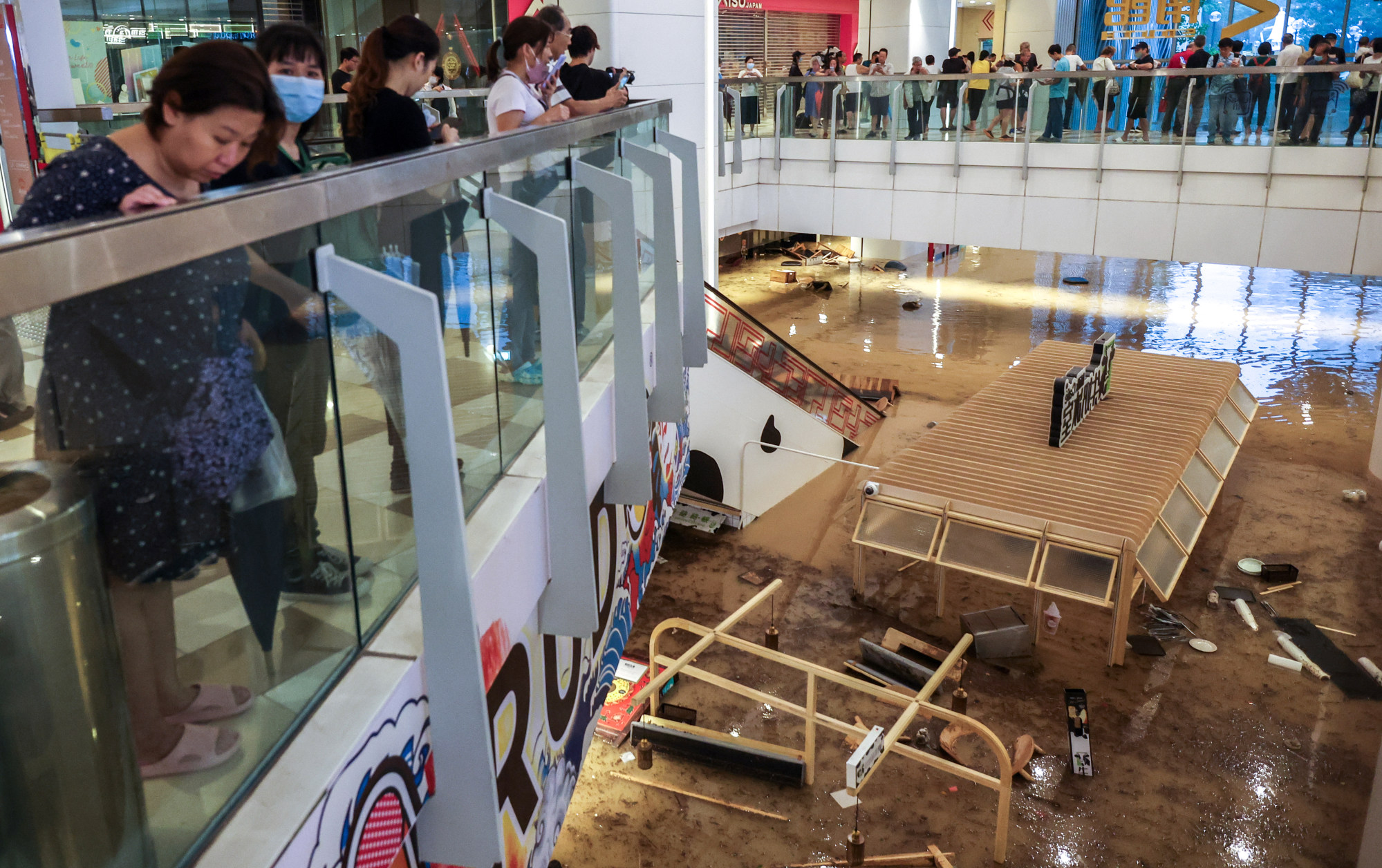
Hong Kong to enhance rainstorm alerts and prioritise improving drainage systems in flood-affected areas, city leader John Lee says
- Warnings can include more information on risk factors and additional details to help residents prepare better, Chief Executive John Lee says
- Lee defends city’s readiness for extreme weather events, stressing government has eliminated dozens of flooding black spots over the years
Hong Kong’s leader has vowed to improve rainstorm alerts by giving residents more details ahead of extreme weather events, saying authorities will also prioritise improving drainage systems in flood-affected areas after a record-breaking downpour last week.
Chief Executive John Lee Ka-chiu on Tuesday said that even though rainstorms were “very unpredictable”, alerts could include more information about risk factors and additional details to help residents prepare better.
“When we give out information, can we increase the content … such as not just sharing the level of rainfall, but maybe also providing a stronger indication of the direction of the rainstorm?” he told reporters ahead of a weekly meeting of the Executive Council, the city’s key decision-making body.

The Observatory currently issues special alerts when rainbands approach the city, sometimes with a few hours notice. It has also offered rain forecasts for specific parts of the city through its mobile app since 2012.
Hong Kong Meteorological Society spokesman Leung Wing-mo said that while forecasters were able to give advance notice of rainband movements, they could not confidently predict the amount of precipitation given limits of current technology.
“They can’t tell whether the heavy rain will lead to an amber, red or black rainstorm warning because the margin of error is too large,” said Leung, referring to the city’s three-level rainstorm warning system based on past or expected hourly rainfall.
Leung, who retired as Observatory assistant director in 2011, said he expected that the weather agency was exploring the use of new technologies, such as artificial intelligence, to improve the accuracy of its forecasts. He also advised residents to learn how to read radar images released on the Observatory’s website to better understand how their areas might be affected by approaching rain clouds.
Hong Kong issued its highest-level black rainstorm alert on Thursday night with little warning. The downpour caused widespread flash floods, turning roads into rivers and inundating the Wong Tai Sin MTR station. Parts of Kwun Tong and Tseung Kwan O were flooded again during heavy rain on Monday morning.
Lee on Tuesday defended the city’s preparedness for extreme weather events, stressing the government had eliminated dozens of flooding black spots over the years.
But he admitted the extreme weather event had prompted the Drainage Services Department to rethink its priorities when it came to flood management.
“The government has lined up some drainage expansion and maintenance works and new projects at different locations. Of course if we see higher risks in some areas where flooding has already occurred, we will prioritise work [in these places],” Lee said.

He pledged that authorities would continue to clear drain blockages across the city to prevent further flooding and urged residents to stay away from slopes and trees as the ground had become saturated with rainwater.
Lee also said a citywide warning was not issued on Monday morning because the rain had fallen in a small area over a short period of time.
He also noted that a study of Hong Kong’s readiness to manage flooding amid rising sea levels and extreme storms was due to be concluded next year.
Speaking on a radio show on Tuesday, vice-chairman of the Sai Kung District Committee Yau Ho-lun said 40 homes in Ma Yau Tong village – located between Po Lam and Lam Tin – were flooded on Monday, and residents were helping each other before the arrival of government aid.
He said the city lacked an interdepartmental system to tackle flooding.
Yau urged the government to list the village as a flooding black spot and ensure measures to protect residents.
Chairman of the Kwun Tong District Council Wilson Or Chong-shing called on the department to review drainage facilities and closely monitor the daily maintenance and drainage of underground water ditches in the area.
The government has built underground stormwater tanks and tunnels to divert rainwater from low-lying urban areas. But one tunnel on Hong Kong Island stretching 11km does not cover eastern areas such as Chai Wan, which was hit hard by the flash flooding
Civil engineer Connie Chan, managing director of infrastructure consulting firm AECOM, said the tunnels were expensive and might not be necessary in areas where other options were available, such as widening existing drain networks.
“As engineers, in the long run, we will review whether our design standards and drainage capacities should be based on weather events that are more extreme, and this past event will be incorporated into the data for future design benchmarks,” Chan said.
The black rainstorm alert issued lasted for more than 16 hours, and the Observatory’s headquarters logged 158.1mm (6.2 inches) of rain in a single hour, the most since records began in 1884.
Additional reporting by Harvey Kong and Willa Wu


